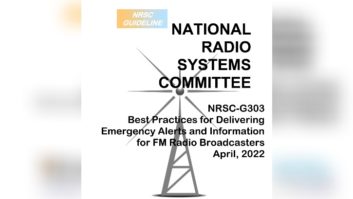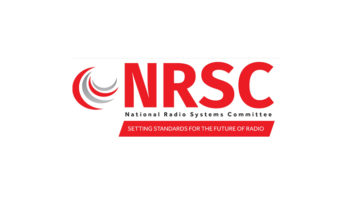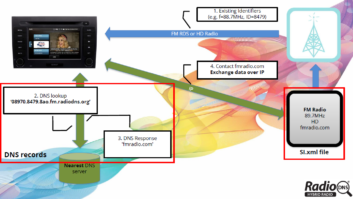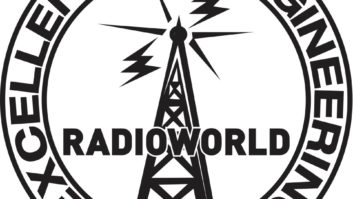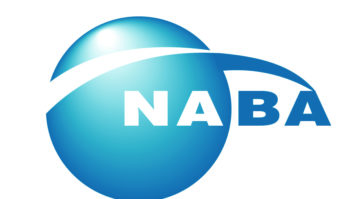
David H. Layer has what many broadcast engineers might feel is a dream job — senior director, Advanced Engineering at the National Association of Broadcasters.At that position, he is privy to leading edge technology and is involved in broadcast engineer policy decisions for the association.
According to his bio, Layer is the primary NAB staff person on NAB’s Radio Technology Committee and the National Radio Systems Committee, a technical standards setting body co-sponsored by NAB and the Consumer Electronics Association (CEA), along with being greatly involved in NAB technology projects, NAB Labs, acting as principal administrator of the NAB Labs Radio Technology Committee and being a go-to guy for tech matters at the NAB.
TechBytes: How has the industry/role of the broadcast engineer changed since you started?
David Layer: I joined NAB in 1995 which was just before the Telecom Act of 1996 was enacted, which had as one consequence the consolidation of the radio industry. This consolidation had a big impact on radio broadcast engineers as radio stations were grouped together. As a result, there was a reduction in the number of broadcast engineering positions, and an increased work load for those engineers working for the larger groups. Additionally, broadcast engineers have seen a shift from “more about RF” to “more about IT.” To sum it up, broadcast engineers today are responsible for more stations and a broader range of technologies.
TechBytes: As Senior Director, Advanced Technologies at NAB, you are involved with cutting edge broadcast technology and ideas. Where is radio technology going?
Layer: As with other technologies, radio is going digital and has been for some time, via HD Radio. Even analog stations “go digital” when you look at what has happened to the infrastructure of a radio station. Right now the challenge for the radio industry is to be sure it is going where the listeners are, and the NextRadio project has been a big success story in that regard, getting FM radio into smartphones and coupling the FM radio receiver with a feature-rich smartphone “app.”
TechBytes: Can or will it ever be all-digital?
Layer: Certainly not in the near term and probably not in the foreseeable future. All-digital feasibility would require sufficient market penetration of HD Radio receivers, which has not been achieved in any of radio’s use case categories. Penetration is growing though and I think the “all-digital” question is one that the industry will be increasingly wrestling with over time.
TechBytes: At the recent IEEE Broadcast Symposium you oversaw a session intriguingly named “Advanced Radio Transmission Systems.” For those who couldn’t make it, give us a highlight or two from that session.
Layer: In this session we learned about studies on characterization of noise in the AM band and about the all-digital AM test project being conducted by NAB Labs. We also heard about a new FM band digital radio system developed in China called China Digital Radio (CDR), which was unveiled in September at IBC in Amsterdam.
TechBytes: Speaking of IEEE, you’ve long been involved in that organization. Why is the IEEE important to broadcast engineers?
Layer: I have been a member of the IEEE Broadcast Technology Society (BTS) since I joined NAB in 1995, and over the years have been very heavily involved in the activities of this group, having served on its board (called the “Administrative Committee” or AdCom), as the chair of the annual IEEE Broadcast Symposium, as a Distinguished Lecturer, and as an associate editor of the Transactions on Broadcasting. This involvement has been very rewarding for me both in terms of professional growth and in the opportunities it has provided for developing valuable and lasting relationships with other broadcast engineering professionals. I highly value my IEEE BTS membership and would encourage all broadcast engineers to look into participating.







